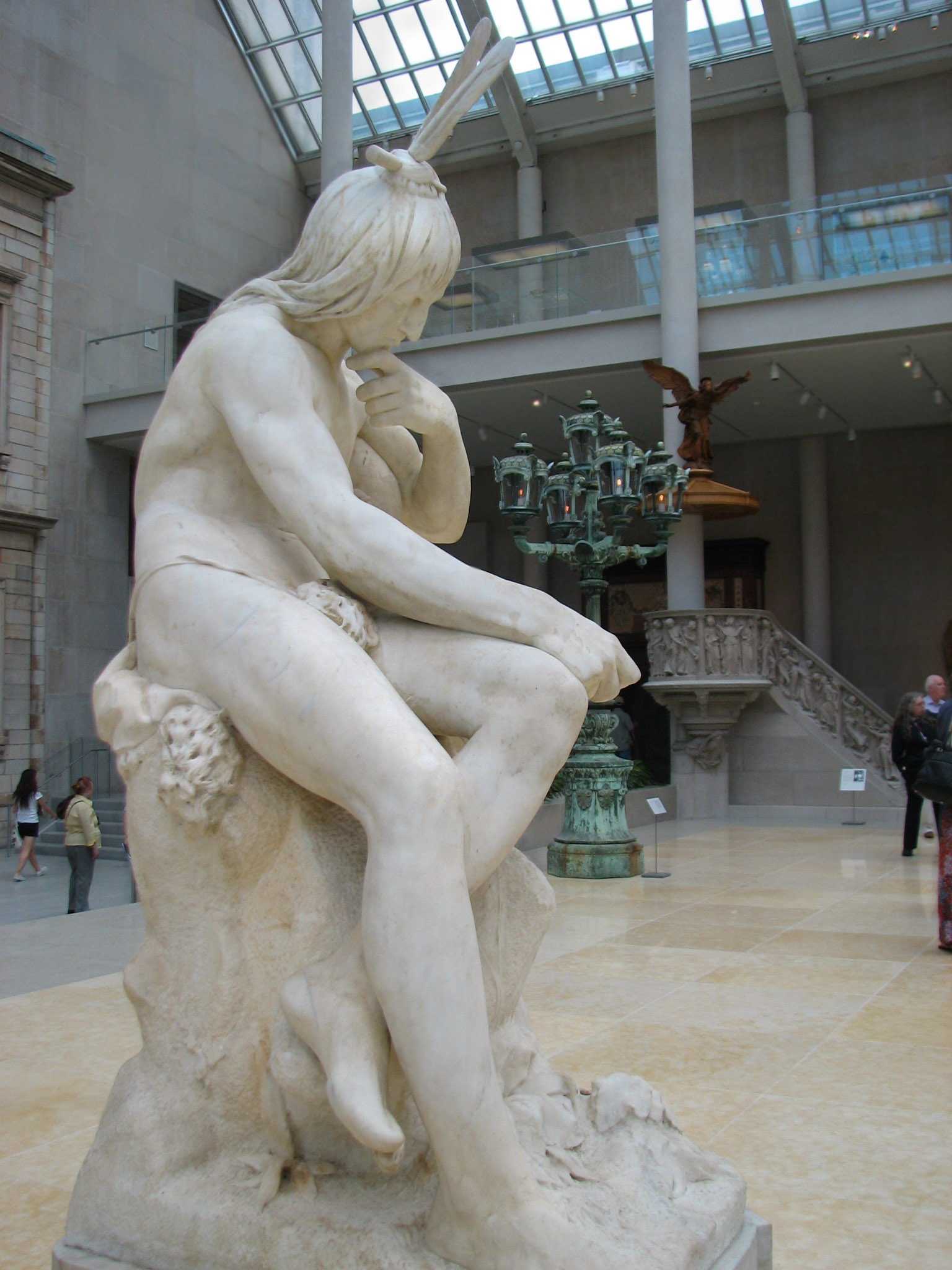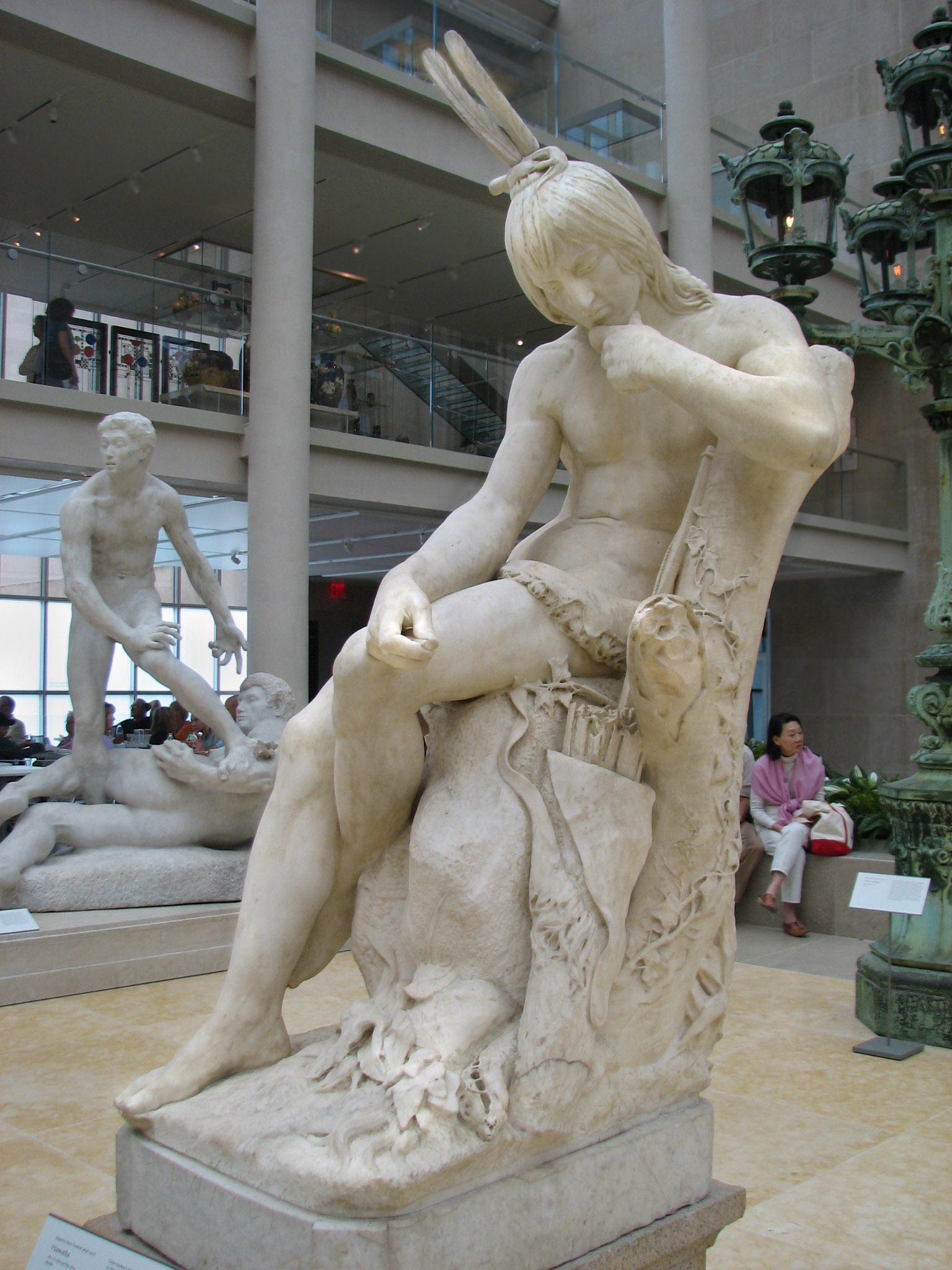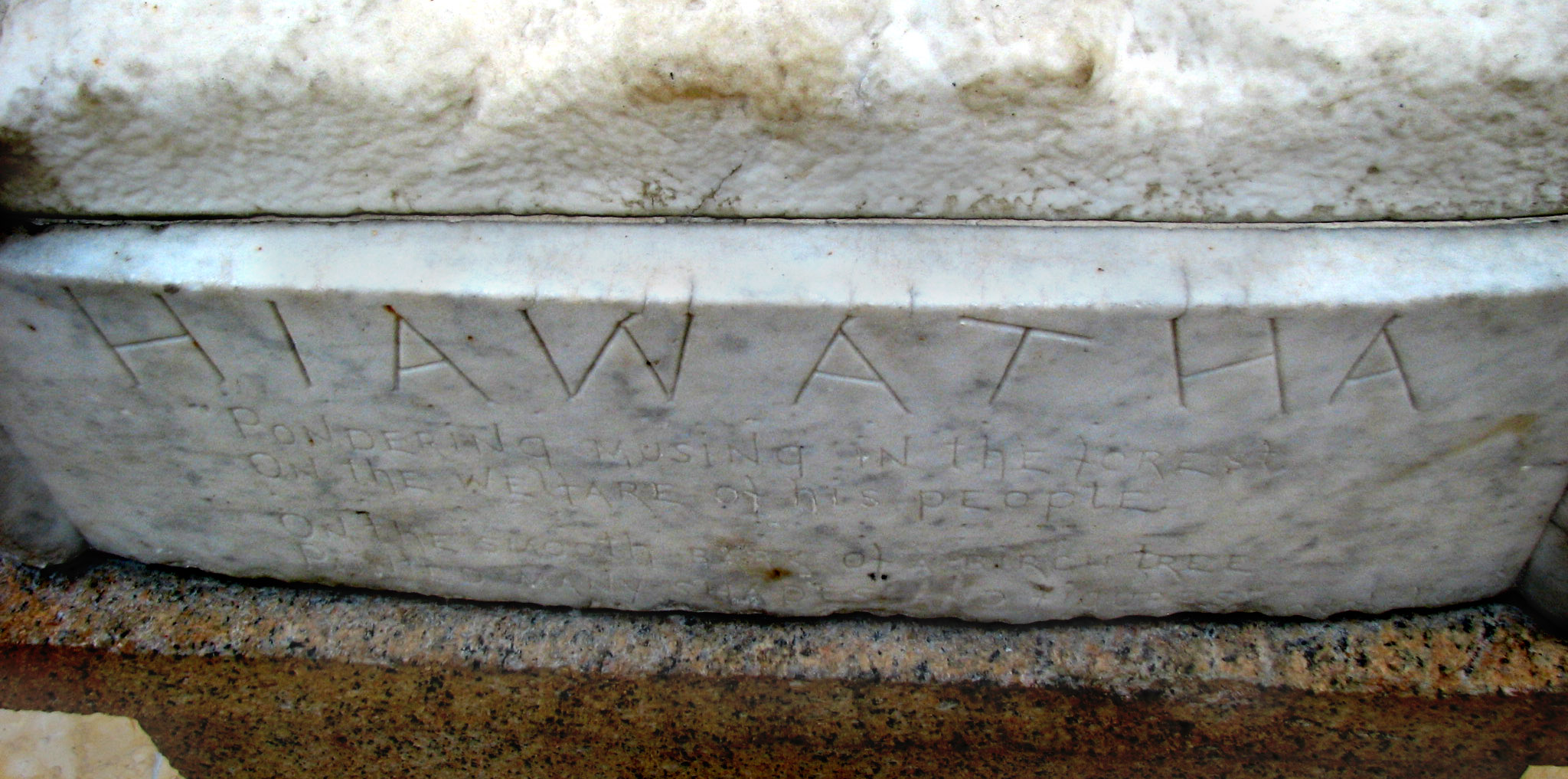

Hiawatha, 1871–72; this carving, 1874
Augustus Saint-Gaudens (1848–1907)
Marble; Figure: 60 x 34 1/2 x 37 1/4 in. (152.4 x 87.6 x 94.6 cm)
Base (Granite base): 23 in. Other (Plinth with inscription): 5 3/4 in. (14.6 cm)
Gift of Diane, Daniel, and Mathew Wolf, in memory of Catherine Hoover Voorsanger, 2001 (2001.641)

"HIAWATHA / Pondering, musing in the forest / On the welfare of his people..."
|
Museum website description "After three years of academic training in Paris, Saint-Gaudens relocated to Rome in 1870 and soon began modeling Hiawatha in his studio at the Palazzo Barberini. The inspiration for his full-size seated nude was drawn from Henry Wadsworth Longfellow's epic poem "The Song of Hiawatha" (1855), a popular wellspring of themes for American artists during the late nineteenth century. Saint-Gaudens represented the central protagonist, a Chippewa chief, as a contemplative figure seated on a rock, leaning against a tree trunk with his quiver of arrows and bow nearby, and "Pondering, musing in the forest / On the welfare of his people," as the excerpt from Longfellow's poem inscribed on the marble base declares. Saint-Gaudens vowed he would "astonish the world" with his ambitious early piece, and, indeed, he sold the unique marble to Edwin D. Morgan, a former governor of New York." |
photos ©Joan Lansberry, May, 2009


